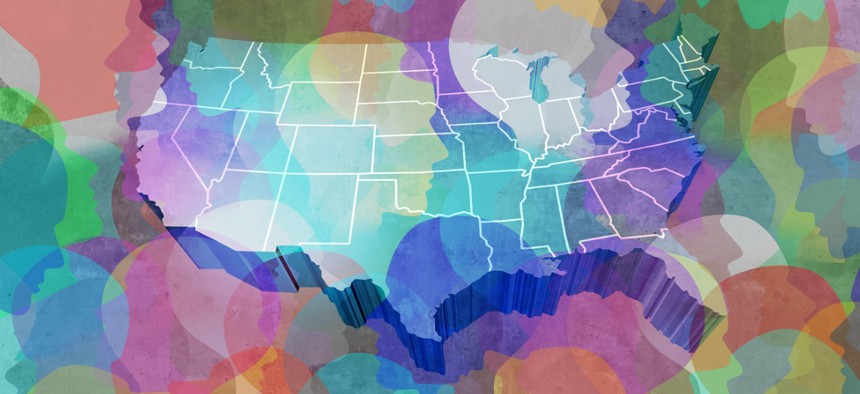GAO: Tech, Automation Improved Decennial Census Productivity

wildpixel/iStock.com
More than half of the Americans self-responded to the decennial census using the internet in 2020.
Forced to alter its strategy for conducting the decennial census in 2020 amid the COVID-19 pandemic, the U.S. Census Bureau made successful use of automation, the internet and some emerging technology tools to execute its most important mission objective, according to the Government Accountability Office.
In a relatively complimentary audit released the week, the Congressional watchdog said the Census Bureau’s modified outreach strategy, including tweaks to its internet response system, helped the agency to achieve “higher-than-expected” online and overall response rates among Americans. In total, 63.4% of Americans self-responded to the Census Bureau, with 50.6% of households using the internet to do so—almost 10% more than Census Bureau officials anticipated. Data collected through the decennial census is used to determine the number of seats each state has in the U.S. House of Representatives.
Despite challenges—including longstanding privacy and data security issues previously identified by GAO—the audit found the Census Bureau was “able to slow the trend in increasingly costly decennials.” The 2020 Census cost roughly $14.2 billion, including $1.1 billion spent responding to the COVID-19 pandemic. Adjusted for inflation, the most recent decennial census cost $96 per household, compared to $92 in 2010, $80 in 2000 and $45 in 1990.
According to GAO, the Census Bureau reined in cost by reengineering certain processes, including how it compiles its address list. The bureau also developed automated tools that managed follow-up processes with nonresponding households, leading to efficiency increases. The use of laptops and smartphones to collect census data in the field—a first for the bureau—further aided the productivity of field operations.
Despite the improvements, GAO’s audit reveals the bureau didn’t do a good job of tracking how much money it saved through its innovation efforts. Tracking that data, GAO said, would help the agency prepare better for future efforts, including the 2030 census. The Census Bureau agreed with all three GAO recommendations, including tracking savings from future innovation; research and test effects of those innovations on data processing timelines; and identifying and reporting on additional measures on the effectiveness of the bureau’s optimization.






